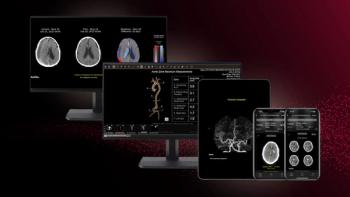
Aussies test effect of nuclear medicine telediagnosis
Teleradiology techniques are enabling an Australian radiology service to offer nuclear cardiology via a Web-based platform. Myocardial perfusion scintigraphy (MPS) performed long-distance may eliminate costly transports."We are conducting a prospective
Teleradiology techniques are enabling an Australian radiology service to offer nuclear cardiology via a Web-based platform. Myocardial perfusion scintigraphy (MPS) performed long-distance may eliminate costly transports.
"We are conducting a prospective trial evaluating rural patients presenting with chest pain to the emergency room," said Peter Tualy, a nuclear medicine technician at Imaging the South in Mandurah, Western Australia.
Historically, suspected cases of significant coronary artery disease often resulted in transfer to Perth by the Royal Flying Doctor Service. This expensive option occasionally proved unnecessary.
The MPS technique demonstrates high sensitivity and specificity in the diagnosis of myocardial ischemia. It leads to improved risk stratification and clinical management for emergency department patients in the evaluation of acute chest pain, said Dr. John Walker, an Imaging the South radiologist and the nuclear physician who developed the MPS system.
"With commercial release of advanced nuclear medicine processing software and increased performance of laptop systems, the reliance on fixed workstations located at the central metropolitan institution is eliminated, as onsite scan reconstruction can now be performed," Walker said.
The cardiac images can be converted to a format that allows transmission of diagnostic-quality data suitable for Web browser integration. Online interactive cardiology consultation uses the resources available through the Internet on most standard PC office applications located within the hospital.
"Preliminary results suggest that MPS findings, distributed via the Internet, allow for earlier risk stratification," Walker said. "They have a direct affect on the decision-making process."
The advantages are likely to include more efficient allocation of hospital beds, prevention of inadvertent discharge of patients who subsequently experience adverse cardiac events, and decreased rates of unnecessary medical transport. The same results are expected with CT, MRI, and ultrasound.
The teleradiology platform has been a working model for eight years, maturing to allow real-time desktop-to-desktop service between primary-care physician and specialist at the click of a mouse, Tualy said.
The service has progressed to 470 cases per day, enterprise-wide, including a 24/7 service for accident and emergency, plus multitrauma cases seen by remote regional hospitals.
Internet-based RIS and PACS contribute to streamlined reporting. They also permit peer support and second opinions from a stable of international specialists and supplement other imaging-dependent disciplines such as cardiology, oncology, and orthopaedics, Walker said.
Newsletter
Stay at the forefront of radiology with the Diagnostic Imaging newsletter, delivering the latest news, clinical insights, and imaging advancements for today’s radiologists.



























